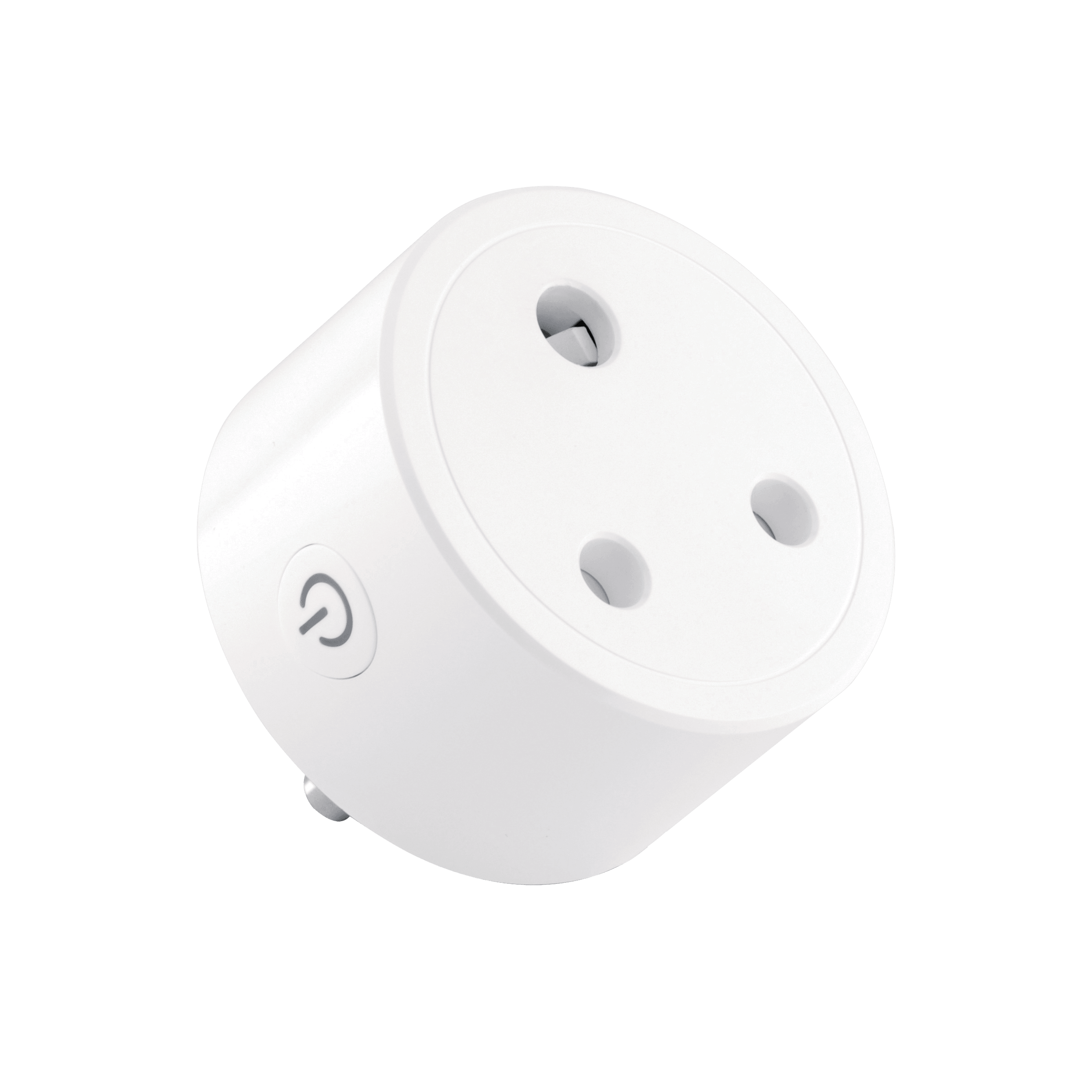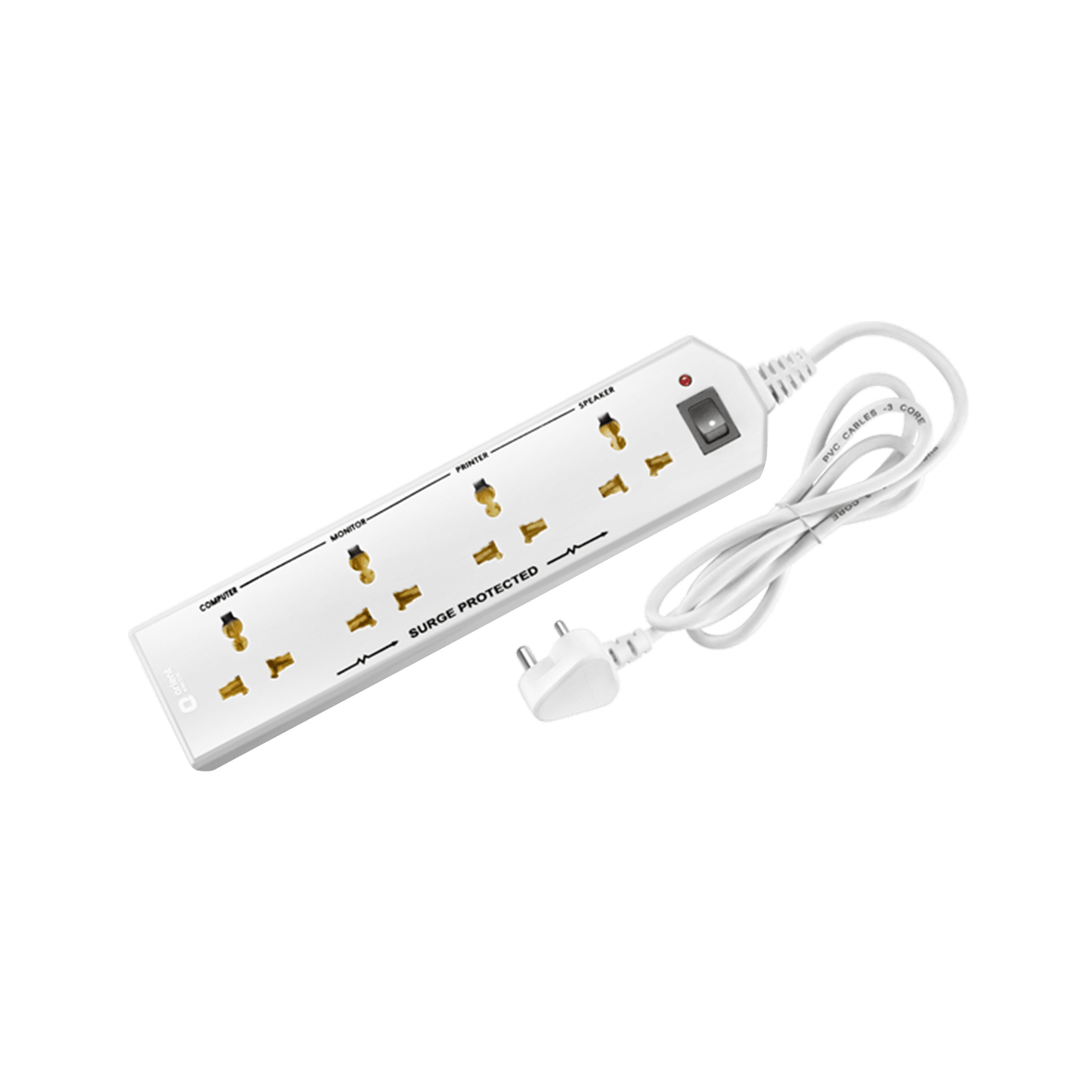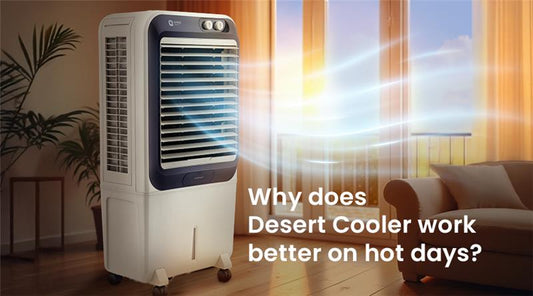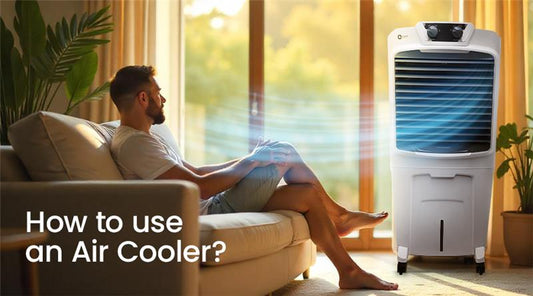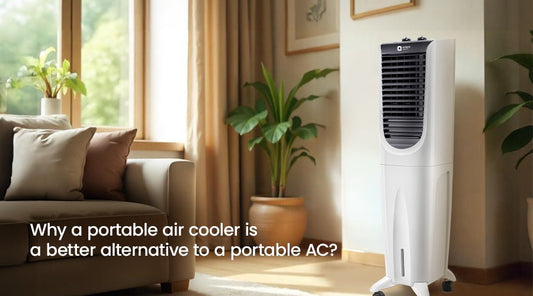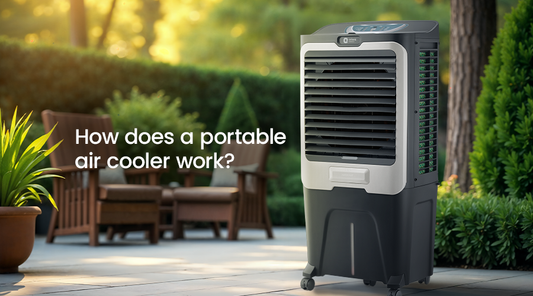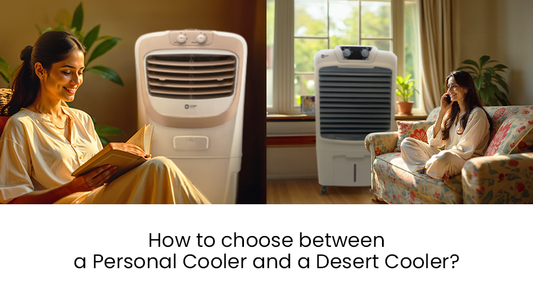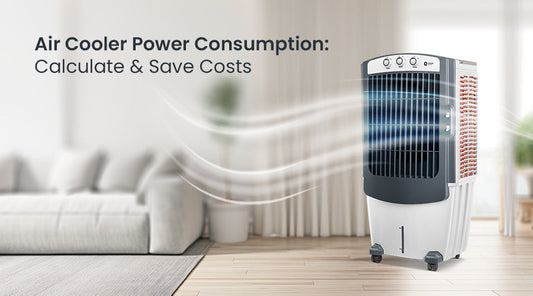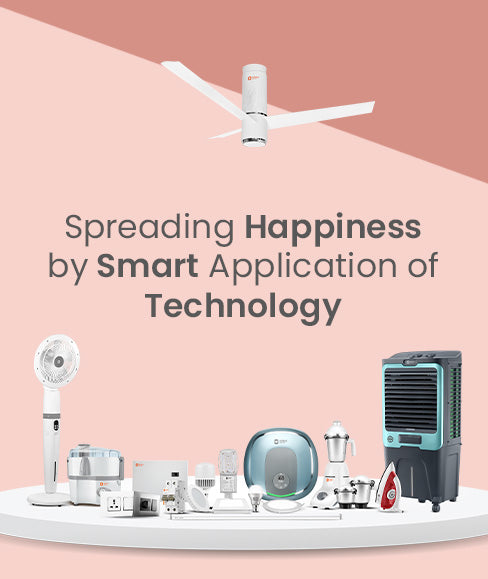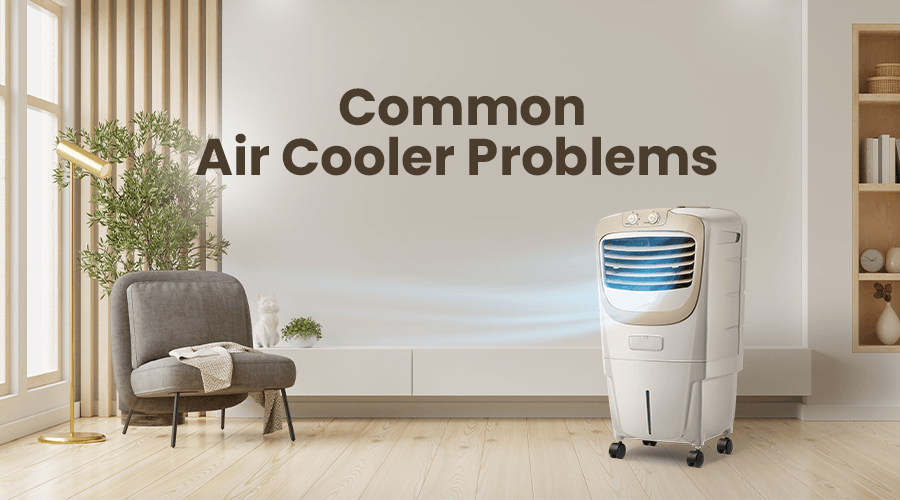
Troubleshooting Common Air Cooler Problems

As the temperature gets hotter, air coolers become essential for keeping our homes cool and comfortable. As we dust off our coolers from storage after the colder months, it's not uncommon to encounter a few operational issues, for example, instead of throwing cool air, your cooler might start to blow out warm air, and in some cases, the pump could stop functioning. Sometimes, even a brand-new cooler can have such issues. Now is the right time to address these issues and ensure your cooler is ready for optimal performance throughout the summer season. In this article, we will take a look at some of the common air cooler problems and easy solutions to fix them.
What to Do When Air Cooler is not Starting?
If your air cooler isn't starting after being plugged in, there could be more than one reason behind it. Here's what to check for and how to fix it.
Damaged Electrical Fuse: The unit may not be receiving power because of a broken fuse. Check the fuse and if it's broken, replace it with a new one.
Circuit Breaker Inspection: If the fuse is intact, look for the circuit breaker. Sometimes they may have tripped, cutting off power to the cooler. If so, reset the circuit breaker.
Power Cord Damage: Another possible issue could be with the power cord. It may have been damaged or broken, preventing the cooler from receiving power. If you find any damage, replace the power cord with a new one.
What to Do When Air Cooler Not Delivering Cool Air?
If your air cooler seems to be running as usual and leave you wondering why my cooler is not cooling or giving powerful airflow, here's what to check and how to fix it:
Check Water Level: The first step is to ensure that the water level in the tank is sufficient. If it's low, fill it up with water. To avoid the hassle of constantly refilling the tank, consider investing in an air cooler with an auto-fill feature, which connects directly to a water source. If you are looking for one with an auto-fill feature, Orient Electric’s Tornado Desert Air Cooler will be a good choice.
Inspect Cooling Pads: If the water level is fine but you're still not getting efficient cooling, the cooling pads could be the problem. Dust particles can clog the pads, hindering airflow. To resolve this, remove the cooling pads, rinse them thoroughly to remove any dirt or debris, and let them dry completely. If necessary, replace the pads with new ones. Additionally, remember to unplug the pump and clean the water tank to ensure there's no dust buildup affecting the cooler's performance.
If the issue persists, it's time to replace the cooling pads. If you're in the market for new ones, consider Dense Nest Honeycomb pads. These pads can retain 45% more water, resulting in 25% more effective cooling compared to other options and can be a good choice to experience maximum airflow.
Why is Water Pump is not Working?
Another common issue with air coolers involves the water pump. A pump is placed in the bottom or the side of the cooler and is often detachable. This device is responsible for circulating the water from the tank to the cooling pads. However, the coolers become less efficient in cooling the room if the pump is not working appropriately. Here's how to address potential problems with the water pump
Check Water Level: For the pump to circulate water evenly across the cooling pads, it is important that the tank is filled with an adequate amount of water. Thus, ensure that the water tank is filled to its optimum level.
Inspect the Impeller: The water pump contains an impeller, a rotating disc that transfers energy to the motor and facilitates water movement. Sometimes, debris can clog the impeller, leading to pump malfunction. Cleaning the impeller with a brush can often resolve this issue.
Consider Pump Replacement: If cleaning the impeller doesn't solve the problem, you may need to replace the water pump. Alternatively, if the issue persists or if you're unsure about handling the pump, seek professional assistance to diagnose and fix any underlying problems.
Air Cooler is Making the Room Uncomfortably Humid
A common issue with air coolers is that they can make the room feel excessively humid, even when they're effectively circulating cold air. This problem often arises due to improper ventilation. Here's how to address it:
Open Windows and Doors: Unlike air conditioners, air coolers work best in well-ventilated spaces. Keep windows and doors open to allow fresh air to flow into the room. This helps prevent the buildup of humidity and ensures that the air inside remains fresh and healthy preventing the room from feeling stuffy or humid.
Use Exhaust Fans: If your room lacks natural ventilation, consider using exhaust fans to remove stale air and moisture. Place exhaust fans near windows or doors to facilitate the exchange of indoor and outdoor air.
Nevertheless, the Indian cooler market has evolved and now offers coolers with a humidity control feature to address this issue. Thus, if you are planning to buy a cooler this season, look for one with this built-in feature.
Air Cooler is Creating a Bad Smell
If you've noticed your cooler creating a bad smell while in operation, here are a few factors that may be contributing to it:
Dirty Water: Over time, if the water tank isn't cleaned regularly, it can accumulate dirt and bacteria, leading to unpleasant odours. Regular cleaning of the tank is essential to ensure the water remains clean and odour-free, thereby maintaining the efficiency of the cooler. Additionally, there are some coolers that feature dust filters and mosquito repellents, which help prevent any dirt or allergens from entering the cooling unit, ensuring cleaner and fresher air.
Dirty Cooling Pads: The cooling pads can also become clogged with dirt over time, resulting in a fishy odour from the circulated air. It's important to clean the cooling pads regularly to prevent this issue. For more tips, check out our article tips to keep your cooler running smoothly.
Water Leakage from the Air Cooler
One of the most persistent problems faced by air cooler owners is water leakage from the tank. This issue can occur due to several factors:
Overflowing Tank: It might seem simple, but overfilling the water tank is a common cause of leakage. Similarly, if the ice chamber is overfilled and the ice melts too quickly, it can lead to overflow and subsequent leakage.
Improperly Fixed Cooling Pads: Despite the ease of installation, many users place the cooling pads incorrectly. This misplacement can disrupt the water flow and cause it to spill out of the tank. Additionally, during cleaning, the cooling pads may become damaged, compromising their ability to retain water and resulting in leakage. In such cases, seek professional assistance or replace them with new ones.
Faulty Water Tank: If you notice water leaking from the bottom of the unit, it may indicate a more serious issue such as a broken tank or small holes in the unit. For minor holes, applying an elastomeric sealer can provide a temporary fix. However, if the tank is significantly damaged, it may need to be replaced entirely. If your air cooler is still under warranty, contacting the company's technicians for repair or replacement options is recommended.
If you're still facing issues despite trying to fix them, it might be time to call in the experts. They can thoroughly examine the problem and offer expert solutions. On the other hand, if you're thinking about getting a new air cooler, ensure that you look for a branded one that is known for its efficiency, long-term warranty, and offers timely services when required.
Frequently Asked Questions (FAQs)
Q1. Can we run air cooler continuously?
Ans. Yes, you can run an air cooler continuously, but proper maintenance and usage are crucial for optimal performance and longevity. Ensure the water tank is refilled regularly to prevent the pump from running dry, and maintain proper ventilation by keeping windows or doors slightly open to avoid excessive humidity. Regular cleaning of the cooling pads and the unit itself helps prevent dust accumulation and odors.
While air coolers are energy-efficient, giving them occasional breaks can help prolong the motor and pump's lifespan. With these precautions, running an air cooler continuously is both feasible and effective.
Q2. Why is there a cooler sound problem?
Ans. A cooler sound problem can occur due to several reasons, most of which are related to wear and tear or improper maintenance. Common causes include a loose or misaligned fan blade, which can create a rattling or vibrating noise. Accumulated dust and debris inside the cooler can also obstruct the fan’s movement, leading to unusual sounds. Additionally, a worn-out or faulty motor may produce grinding or humming noises. Loose screws or parts in the cooler’s frame can result in vibrations, especially during high-speed operation. Regular cleaning, tightening of screws, and timely servicing can help resolve and prevent these sound issues.
